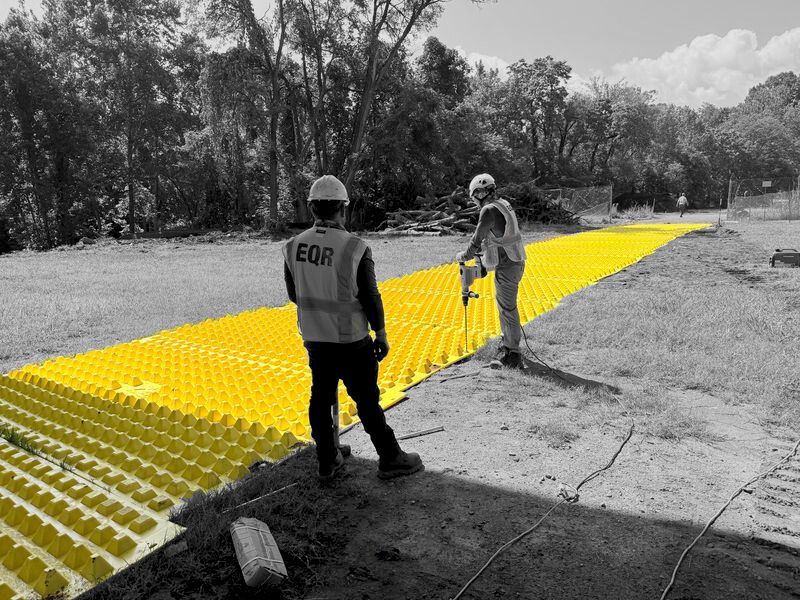Mount Pleasant, Wisconsin
In southeastern Wisconsin, the quiet Village of Mount Pleasant has become a focal point for one of the largest technology investments in the state’s history. Microsoft’s $3.3-billion data center campus, located in Racine County just south of Milwaukee, represents a major step forward in the region’s growing role as a hub for digital infrastructure. The project, managed by Walsh Construction, will expand Microsoft’s cloud and artificial intelligence capacity while bringing hundreds of skilled construction and operations jobs to Wisconsin.

Ground broke in January 2024 on the first phase of construction, known as Area 3B, which is scheduled to be operational in 2025. Microsoft later paused work on two other areas while the company reviewed potential design updates to better align with evolving AI and cloud technologies. In a public statement, a Microsoft spokesperson said, “We have paused early construction work for this second phase while we evaluate scope and recent changes in technology and consider how this might impact the design of our facilities. We anticipate that this process will last months. In the meantime, our commitment to and construction of our planned data center campus continues with high priority for our business.”
Local officials have confirmed that the overall scope and scale of the Mount Pleasant development remain unchanged, and the project is still expected to be completed by the end of 2026. For the Village of Mount Pleasant and the broader Racine County region, the data center represents both an economic opportunity and a test of large-scale construction planning within Wisconsin’s environmental standards.
A site shaped by Wisconsin history
The Mount Pleasant site has a long and complicated legacy. It sits within the area once planned for the Foxconn Wisconn Valley Science and Technology Park, a highly publicized project that never reached its original manufacturing goals. Microsoft’s acquisition of a portion of the land signaled a new direction for southeastern Wisconsin’s technology future. Instead of manufacturing, the site is now home to one of the most advanced data infrastructure projects in the Midwest.
Located within a short drive of Milwaukee and Lake Michigan, which together form part of the Great Lakes Basin, home to 21 percent of the world’s surface freshwater, the site’s terrain and proximity to waterways required a careful approach to erosion and sediment control. With several hundred acres under active construction and frequent truck traffic across unpaved areas, maintaining compliance with the Wisconsin Department of Natural Resources (WDNR) regulations was a priority from the outset.
Managing sediment and compliance
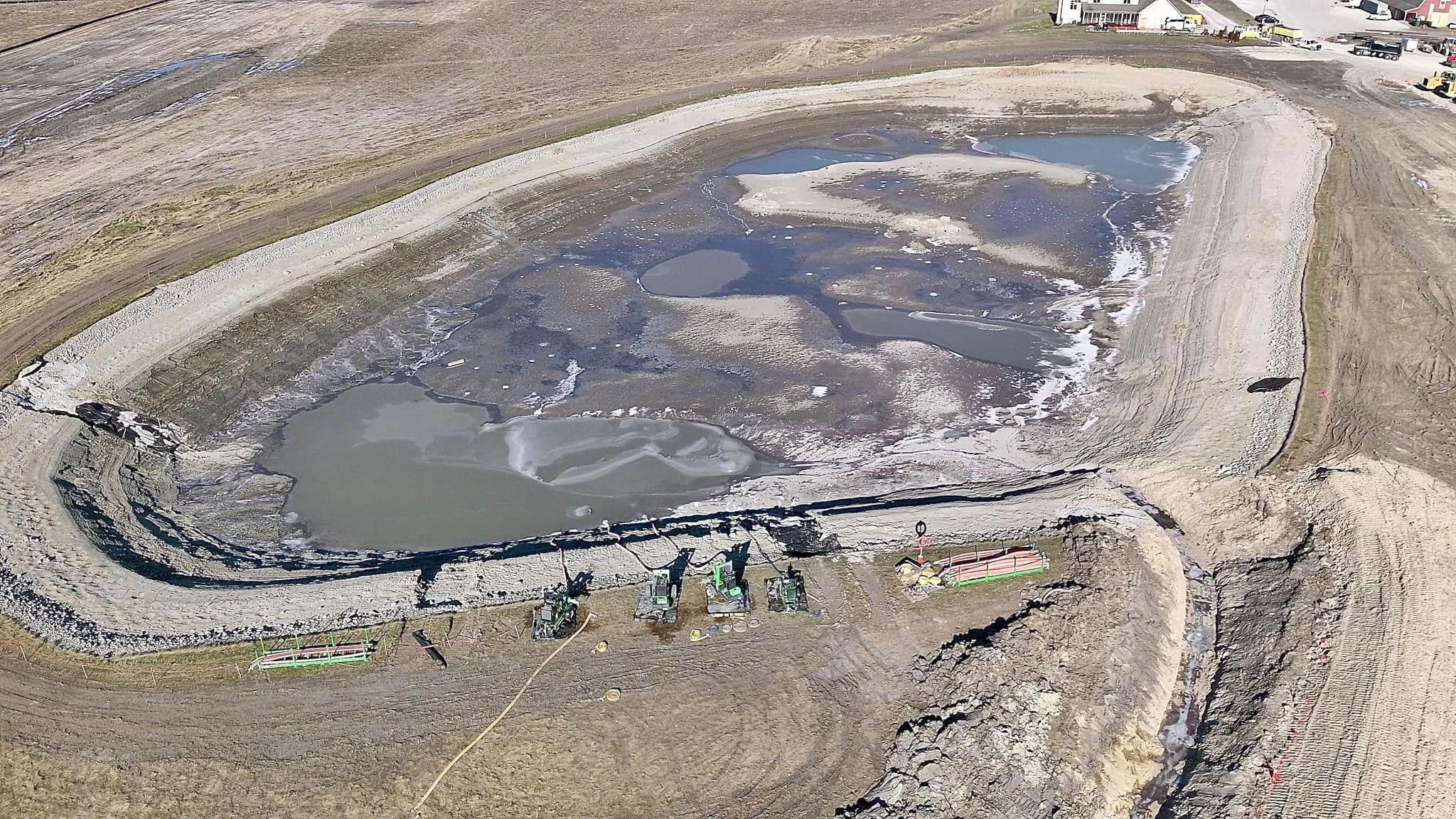
Wisconsin’s WDNR Technical Standard 1057, Trackout Control Practices, sets statewide requirements for preventing and reducing the spread of sediment from construction sites onto public roads. The standard calls for projects to prevent trackout by stabilizing work surfaces, reduce it through measures such as stone pads or manufactured trackout control devices, and mitigate any residual sediment through street cleaning.
For Walsh Construction, meeting these expectations was about more than avoiding fines. It was an opportunity to demonstrate that large data center projects can meet the highest environmental standards while keeping operations efficient and safe. The team developed a sediment control plan that integrated multiple levels of protection, including stabilized work surfaces, stormwater containment, and specialized trackout control systems at all major access points.
Because of the region’s clay-heavy soils and seasonal precipitation, the site demanded a solution that could perform year-round without significant downtime or material waste. Traditional rock pads often compact or clog in these conditions, requiring constant maintenance and replacement. The Walsh team identified manufactured trackout control devices as a better fit for the Mount Pleasant site.
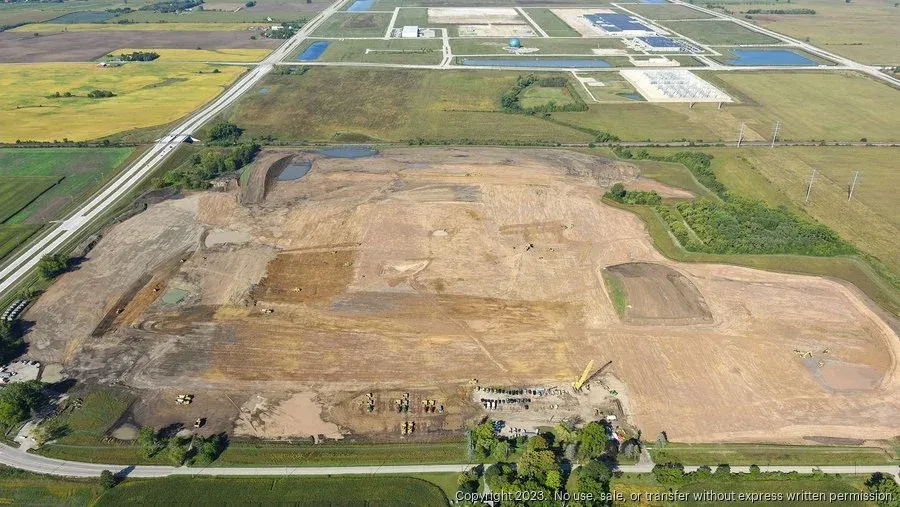
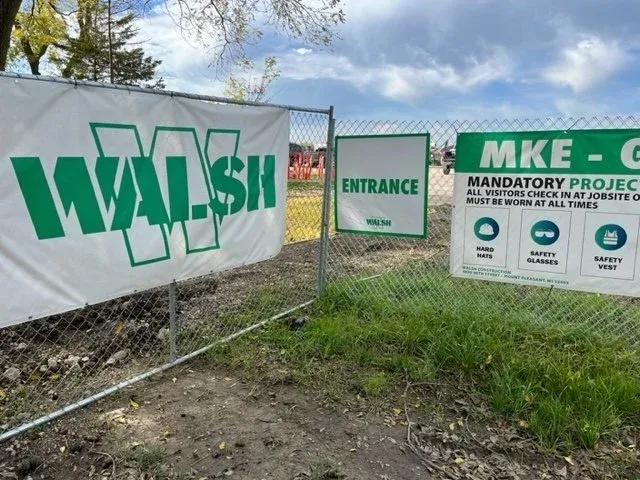
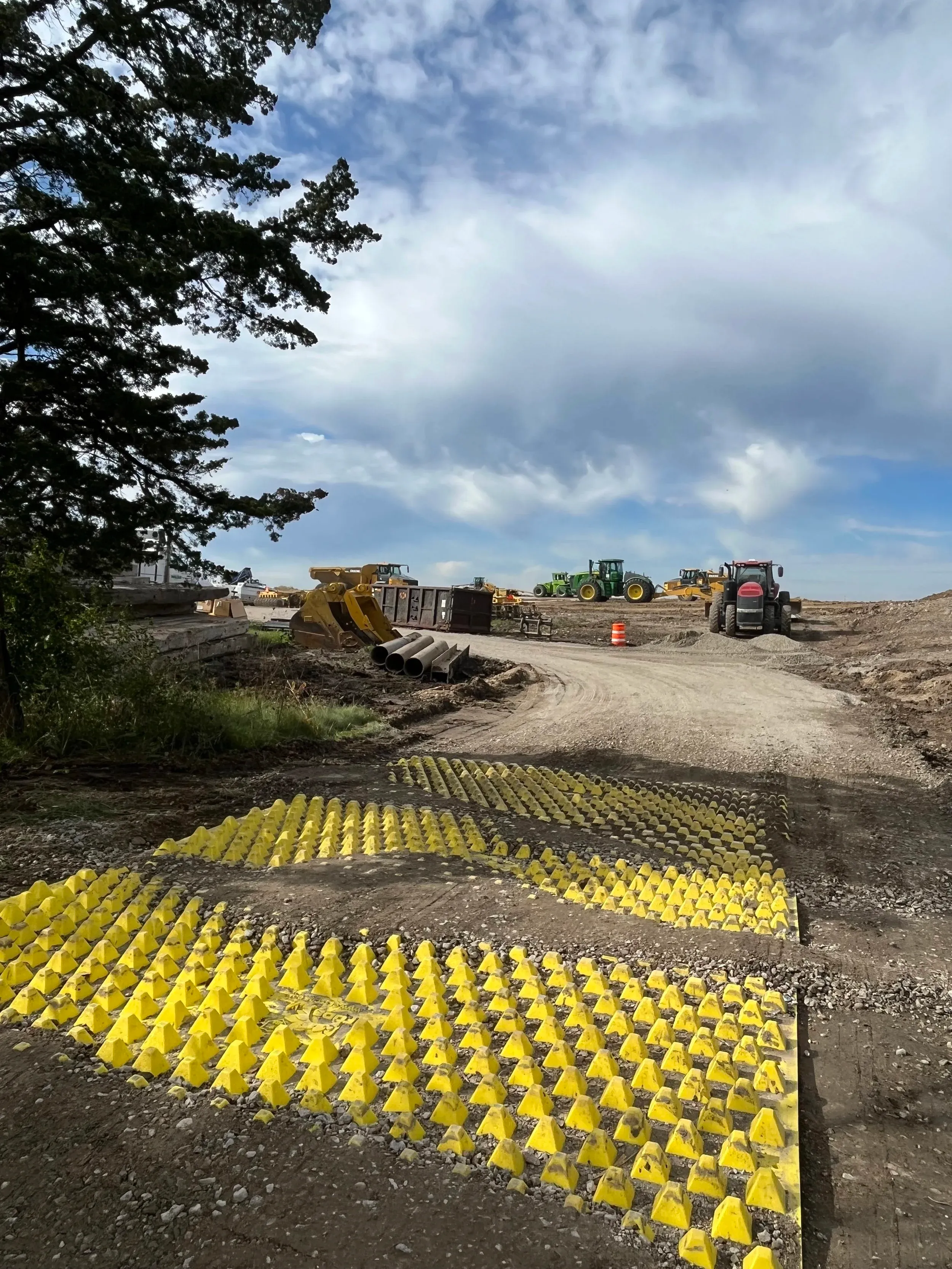
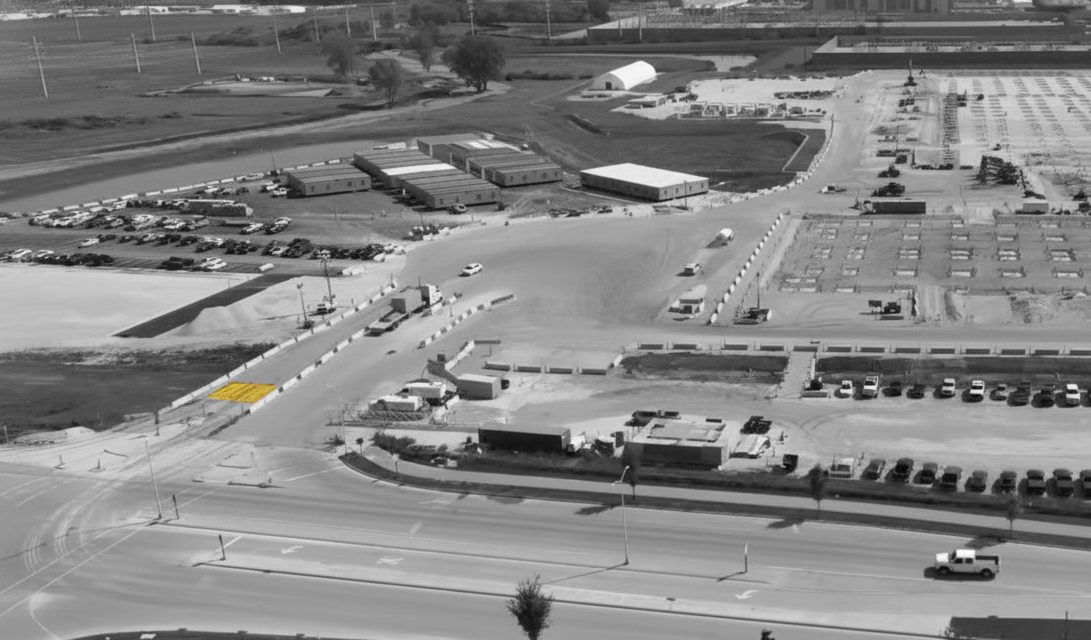
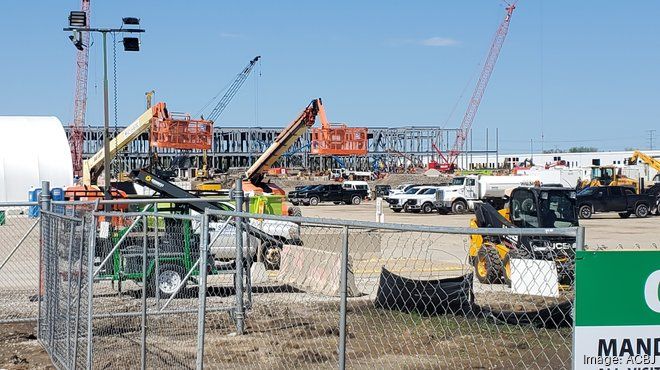
Implementing manufactured trackout control
To meet WDNR 1057 criteria and reduce sediment leaving the site, Walsh Construction incorporated manufactured trackout control devices that could be relocated as construction progressed. Among the tools used on the project, Walsh Construction chose FODS Trackout Control Mats, a modular system designed and manufactured in the United States. The mats provide a stable driving surface with raised pyramids that cause tires to flex under vehicle weight, dislodging mud and debris before vehicles enter public roads.
FODS, short for Foreign Object Debris Systems, is a U.S.-based manufacturer specializing in reusable construction entrance systems designed to prevent sediment and debris from leaving active worksites. Founded to improve upon traditional aggregate entrances, FODS developed the industry’s first durable composite mat system engineered from high-density polyethylene (HDPE). Each mat is built for strength, mobility, and sustainability, offering a longer lifespan and reduced environmental impact compared to rock or gravel alternatives. Today, FODS products are deployed nationwide to help contractors meet stormwater compliance standards while reducing costs and material waste.
Installation followed WDNR guidelines for manufactured devices, which require placement on stable subgrades, minimum device lengths of 32 feet, and direct drainage to approved sediment treatment areas. Crews positioned the mats at all high-traffic exits, ensuring that every vehicle traveling across exposed soil passed over a full device length. The driving surface between each exit and the roadway was reinforced to prevent rutting, and runoff was directed toward onsite containment zones.
Routine inspections were conducted regularly in accordance with WDNR’s operation and maintenance expectations. Following heavy rain or during periods of high traffic, crews removed accumulated sediment from the mat surfaces and returned it to onsite containment areas. When access points shifted or phases changed, the mats were quickly relocated using onsite equipment. This approach maintained continuous compliance under changing weather conditions without interrupting workflow.
By relying on a reusable manufactured system, the team reduced the need for aggregate deliveries and minimized waste generated by traditional gravel pads. Unlike rock pads, which degrade quickly and require frequent replacement, the mats maintained consistent performance throughout changing weather conditions. Their reliability across Wisconsin’s freeze-thaw cycles and wet spring months helped ensure ongoing compliance with WDNR standards while keeping access points stable and operational year-round.
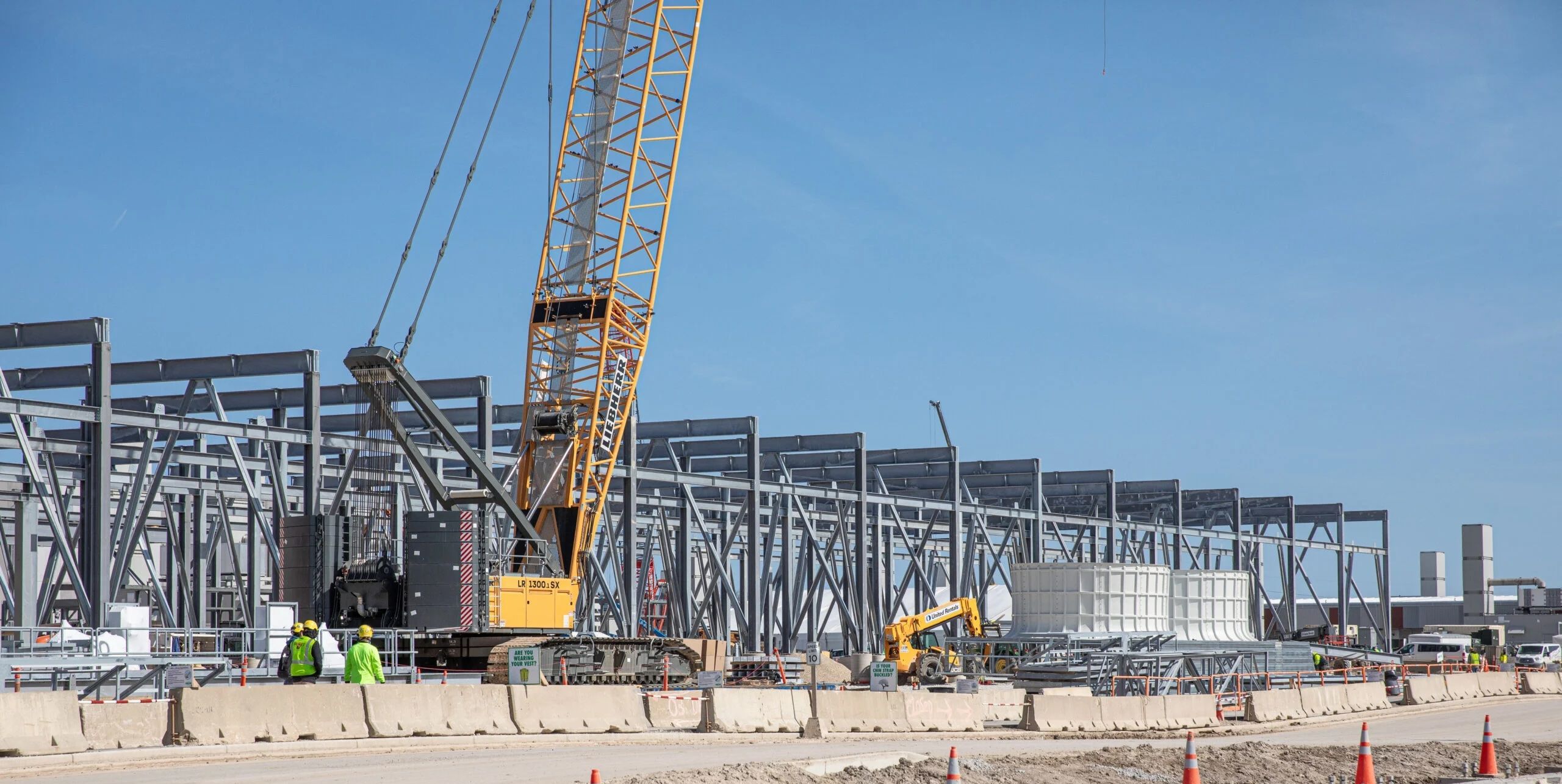
Cleaner roads and safer communities
Effective trackout control offers tangible benefits beyond compliance. Clean roads mean safer conditions for workers and local motorists, reduced dust, and less maintenance on nearby municipal infrastructure. WDNR 1057 requires that trackout control devices and adjacent streets be inspected at least daily, with additional cleaning if sediment accumulates. Walsh Construction maintained these standards throughout the Mount Pleasant build, integrating monitoring into its broader environmental management plan.
Local residents and officials in the Village of Mount Pleasant have noted the project’s strong environmental performance. Keeping public roadways clear of sediment has helped maintain positive community relations and reinforced the project’s reputation as a responsible long-term investment for the area.
Supporting Wisconsin’s sustainability goals
The data center project also supports Wisconsin’s wider environmental and economic initiatives. By reducing waste materials and maintaining compliance with the Wisconsin Pollutant Discharge Elimination System (WPDES) construction permit, the site contributes to protecting nearby waterways that ultimately flow into Lake Michigan.

The use of reusable trackout control systems aligns with Wisconsin Administrative Code NR 151.121–128, which encourages erosion and sediment control measures that minimize long-term environmental impact. Each component of the Mount Pleasant site’s erosion control plan was developed to reflect these principles by minimizing soil disturbance, reusing materials, and protecting water quality in Racine County and the greater Milwaukee area.
Performance and long-term results
While the Mount Pleasant project is still ongoing, early results have shown that the combination of stabilized surfaces, manufactured trackout devices, and routine inspections has significantly reduced sediment reaching public roads. Fewer maintenance events and less frequent street sweeping have resulted in cost savings and reduced fuel use for support vehicles. The use of reusable systems like FODS also supports long-term compliance by maintaining consistent performance through changing weather conditions.
As construction continues, the Mount Pleasant Data Center is part of Microsoft’s broader investment in cloud and artificial intelligence infrastructure. These facilities will power advancements in research, manufacturing, agriculture, and education across the region, supporting Wisconsin’s role in the growing digital economy. The project reflects Microsoft’s commitment to building sustainable, responsible, and community-focused data infrastructure that enables innovation while minimizing environmental impact.
Looking ahead
Microsoft’s Mount Pleasant Data Center is more than a construction project. It represents a shift in how Wisconsin approaches large-scale technology development, balancing economic growth with environmental stewardship. The site’s adherence to WDNR Technical Standard 1057, its use of manufactured trackout control devices, and its commitment to sustainable construction all serve as a model for future projects across the state.
For Walsh Construction and other contractors working in Wisconsin’s challenging soils and changing weather, the Mount Pleasant experience underscores the value of planning for compliance from day one. Integrating solutions like FODS Trackout Control Mats within a broader stormwater strategy helps keep roads clean, protect local waterways, and meet regulatory expectations without slowing progress.
As Microsoft expands its global cloud and AI infrastructure, the Mount Pleasant Data Center aligns directly with the company’s vision for responsible, high-impact computing environments. Microsoft views AI as “the defining technology of our time” and is committed to building infrastructure that supports large-scale compute, environmental sustainability and societal benefit. By investing in a project that emphasizes reusable systems, minimal material waste and long-term site performance, the company is delivering more than data capacity, it's delivering a model for how advanced infrastructure can be built with low impact and high value for local communities.
